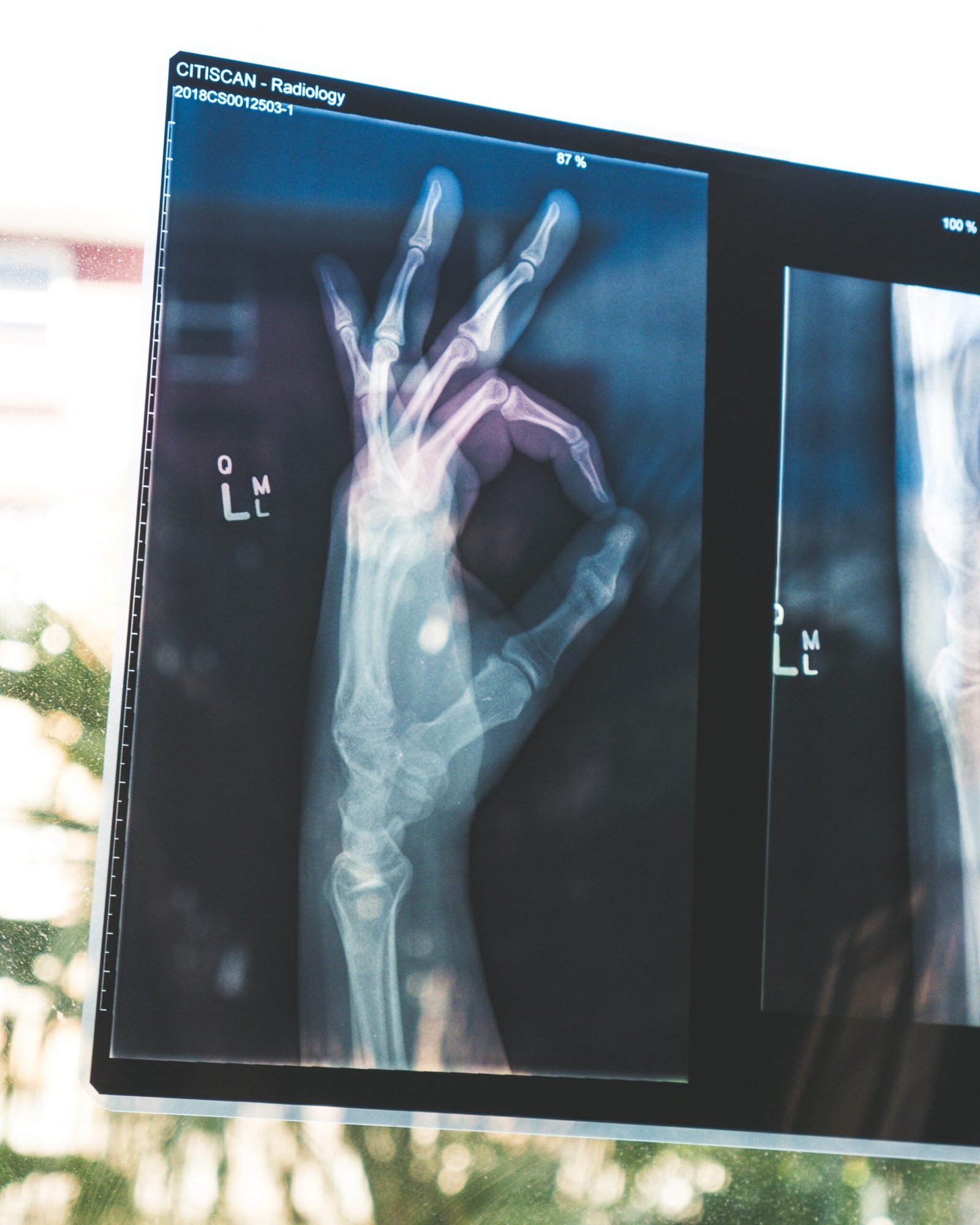Imagine a time when our ancestors roamed the Earth, hunting and gathering their food. This was a time before processed snacks and fast-food chains, when natural, whole foods were the only option. The Paleo Diet aims to take us back to this simpler time, advocating for a return to the diet and lifestyle of our ancestors. By focusing on lean meats, fruits, vegetables, nuts, and seeds, this diet claims to promote weight loss, better digestion, and improved overall health. So, is the Paleo Diet truly a journey into our ancient past or just another passing fad? Let’s take a closer look and explore the dietary choices of our ancestors.

This image is property of images.unsplash.com.
The Evolution of the Paleo Diet
Introduction of the Paleo Diet
The Paleo diet, short for Paleolithic diet, is a dietary approach that aims to mimic the eating patterns of our ancient ancestors during the Paleolithic era. This diet gained popularity in the early 2000s and has since evolved to accommodate various lifestyles and health goals. By focusing on whole, unprocessed foods and eliminating processed sugar, grains, and dairy, the Paleo diet emphasizes a return to a more natural and nutrient-dense way of eating.
Understanding the Anthropological Basis
The foundation of the Paleo diet lies in understanding how our ancestors obtained their food. During the Paleolithic era, humans were hunters and gatherers, relying on hunting, fishing, and foraging for their sustenance. By examining the anthropological evidence, researchers have determined that our ancestors consumed a diet rich in lean proteins, fruits, vegetables, nuts, and seeds, while avoiding processed foods, grains, and dairy products.
Identifying the Key Principles
The Paleo diet embodies several key principles that guide its implementation. These principles include a focus on whole and unprocessed foods, the elimination of processed sugar and grains, increased consumption of lean proteins, prioritizing healthy fats, emphasizing fruits and vegetables, avoiding dairy products, excluding legumes and beans, and limiting salt intake. By adhering to these principles, individuals can aim to achieve overall health and well-being.
Benefits of the Paleo Diet
Improved Digestion and Gut Health
One of the significant benefits of following the Paleo diet is improved digestion and gut health. By eliminating processed foods and grains that can irritate the digestive system, and focusing on whole and unprocessed foods, the Paleo diet provides the body with the necessary nutrients for optimal gut health. Additionally, the high fiber content from fruits, vegetables, and nuts aids in promoting a healthy digestive system.
Weight Loss and Management
For those looking to shed a few pounds, the Paleo diet has shown promising results in weight loss and management. By eliminating processed sugar and grains that are commonly associated with weight gain, and emphasizing whole, nutrient-dense foods, the Paleo diet helps individuals maintain a calorie deficit, leading to weight loss. The increased consumption of lean proteins and healthy fats also promotes satiety, reducing the likelihood of overeating.
Increased Energy Levels
The Paleo diet is renowned for its ability to improve energy levels. By cutting out processed foods and refined sugars that can lead to energy crashes, and focusing on whole and unprocessed foods, the Paleo diet provides a steady source of energy throughout the day. The emphasis on lean proteins, healthy fats, fruits, and vegetables helps stabilize blood sugar levels, preventing energy dips and promoting sustained energy.
Reduced Inflammation
Inflammation is the body’s natural response to injury or illness, but chronic inflammation can have negative effects on health. The Paleo diet has been associated with reduced inflammation due to its focus on whole, nutrient-dense foods and the elimination of foods that may trigger inflammation, such as processed sugars, grains, and dairy products. The inclusion of anti-inflammatory foods like fatty fish, nuts, and antioxidant-rich fruits and vegetables further contributes to reducing inflammation in the body.
Balanced Blood Sugar Levels
The Paleo diet promotes balanced blood sugar levels, which is crucial for overall health and well-being. By eliminating processed sugars and refined carbohydrates, which can cause blood sugar spikes and crashes, and focusing on whole, unprocessed foods, the Paleo diet helps stabilize blood sugar levels. The high fiber content from fruits, vegetables, and nuts also slows down the absorption of sugar into the bloodstream, further contributing to balanced blood sugar levels.
Understanding the Paleo Diet Guidelines
Focus on Whole and Unprocessed Foods
The foundation of the Paleo diet is centered around consuming whole and unprocessed foods. This includes lean proteins such as grass-fed meat, poultry, and seafood, as well as a variety of fruits and vegetables. By focusing on these nutrient-dense foods, individuals can maximize their intake of essential vitamins, minerals, and antioxidants.
Elimination of Processed Sugar and Grains
To align with the principles of the Paleo diet, processed sugar and grains are completely eliminated. This means avoiding foods and beverages that contain added sugars and opting for natural sweeteners like honey or maple syrup in moderation. Grains such as wheat, rice, and corn are also excluded, as they are considered modern additions to the human diet.
Increased Consumption of Lean Protein
Lean protein is a vital component of the Paleo diet. Sources of lean protein include grass-fed meat, poultry, fish, and eggs. These sources provide essential amino acids necessary for muscle growth, repair, and overall body function. By increasing the consumption of lean protein, individuals can support their body’s needs and promote satiety.
Prioritizing Healthy Fats
Contrary to popular belief, the Paleo diet encourages the consumption of healthy fats. Sources of healthy fats include avocados, nuts, seeds, and oils such as olive, coconut, and avocado oil. Healthy fats provide important nutrients and support various bodily functions, including brain health and hormone production.
Emphasizing Fruits and Vegetables
Fruits and vegetables play a significant role in the Paleo diet. These nutrient powerhouses provide essential vitamins, minerals, and antioxidants. By consuming a variety of fruits and vegetables, individuals can ensure they are obtaining a wide range of nutrients necessary for optimal health.
Avoiding Dairy Products
Dairy products are excluded from the Paleo diet due to their relatively recent introduction to the human diet. Dairy is not naturally consumed in its raw form and can cause digestive issues, especially in individuals who are lactose intolerant. However, some individuals may choose to include certain dairy alternatives, such as nut milk or coconut milk, in moderation.
Excluding Legumes and Beans
Legumes and beans are also eliminated from the Paleo diet due to their anti-nutrient content. These anti-nutrients can interfere with nutrient absorption and digestion. While legumes and beans are often considered a healthy source of plant-based protein, the Paleo diet suggests obtaining protein from other sources such as lean meats and fish.
Limited Salt Intake
While some amount of salt is necessary for the body, excessive salt consumption can lead to health issues. The Paleo diet encourages limiting salt intake and recommends using natural sources of flavoring, such as herbs and spices, to enhance the taste of meals.
Paleo Diet Sample Meal Plan
Breakfast Options
- Scrambled eggs with sautéed vegetables and avocado slices
- A spinach and mushroom omelet
- Chia seed pudding with berries and nuts
Lunch Ideas
- Grilled chicken salad with mixed greens, cherry tomatoes, and olive oil vinaigrette
- Baked salmon with roasted sweet potatoes and steamed broccoli
- Stir-fried beef with vegetables and coconut aminos
Dinner Recipes
- Grilled steak with roasted Brussels sprouts and cauliflower mash
- Baked chicken thighs with roasted vegetables and a side of butternut squash soup
- Pan-seared cod with asparagus and lemon-garlic sauce
Snack Suggestions
- Apple slices with almond butter
- Carrot sticks with guacamole
- Beef jerky
- Mixed nuts and dried fruits

This image is property of images.unsplash.com.
Meal Prepping and Cooking Tips
Batch Cooking for Convenience
Meal prepping is a popular practice among Paleo dieters. By preparing larger quantities of food in advance, individuals can save time and ensure they have healthy meals readily available throughout the week. Consider batch cooking proteins, roasting vegetables, and preparing staple ingredients like cauliflower rice or sweet potato mash.
Utilizing Fresh Ingredients
The Paleo diet emphasizes the use of fresh, whole ingredients. Opt for locally sourced produce, organic meats, and sustainable seafood whenever possible. Fresh ingredients not only provide superior taste and quality but also ensure a higher nutrient content.
Importance of Proper Seasoning
Spices and herbs are essential for adding flavor and variety to meals without relying on added sugars or excessive salt. Experiment with different spice combinations and fresh herbs to enhance the taste of your dishes. Popular options include garlic, turmeric, cumin, paprika, and rosemary.
Exploring Alternative Cooking Techniques
Expand your culinary skills by exploring alternative cooking techniques that align with the Paleo diet. Options such as grilling, baking, sautéing, and slow-cooking can all be utilized to prepare satisfying and flavorful meals. Experiment with different methods to keep your meals exciting and diverse.
Addressing Common Concerns
Meeting Calcium and Vitamin D Needs
With the exclusion of dairy products, some individuals may have concerns about meeting their calcium and vitamin D needs. However, there are several Paleo-friendly sources of calcium and vitamin D. Leafy greens, broccoli, almonds, and canned fish with edible bones (such as sardines or salmon) are excellent sources of calcium. Vitamin D can be obtained through natural sunlight exposure or through supplementation if necessary.
Ensuring Sufficient Fiber Intake
The Paleo diet is often mistakenly believed to be low in fiber due to the elimination of grains and legumes. However, by emphasizing fruits, vegetables, nuts, and seeds, individuals can easily meet their fiber needs. These fiber-rich foods contribute to a healthy digestive system and promote overall well-being.
Managing Nutrient Deficiencies
While the Paleo diet provides a wide range of essential nutrients, it is important to ensure a balanced and varied diet to prevent nutrient deficiencies. Consulting with a healthcare professional or registered dietitian can help identify any potential nutrient gaps and provide guidance on appropriate supplementation if necessary.
Adapting the Paleo Diet for Different Lifestyles
The Paleo diet can be adapted to accommodate various lifestyles, including vegetarian and vegan diets. While animal protein is a central component of the Paleo diet, vegetarians can focus on plant-based sources of protein such as tofu, tempeh, and legumes. Vegans can also incorporate plant-based fats like avocados, nuts, and seeds to meet their nutritional needs.

This image is property of images.unsplash.com.
Paleo Diet for Athletes and Physical Performance
Fueling the Body for Optimal Performance
Athletes and individuals engaging in regular physical activity can benefit from the Paleo diet by utilizing nutrient-dense foods to fuel their bodies for optimal performance. By consuming lean proteins, healthy fats, and ample amounts of fruits and vegetables, athletes can ensure they have the necessary energy and nutrients to support their training and recovery.
Pre- and Post-Workout Nutrition Guidelines
Pre- and post-workout nutrition is crucial for athletes. Prior to a workout, it is recommended to consume a balanced meal consisting of lean protein, carbohydrates, and healthy fats in order to provide sustained energy. Post-workout, it is important to replenish glycogen stores and support muscle recovery by consuming a combination of protein and carbohydrates.
Hydration Tips for Athletes
Proper hydration is essential for athletic performance. In addition to following the Paleo diet, athletes should prioritize staying hydrated by consuming adequate water throughout the day. Electrolyte-rich beverages such as coconut water can also be incorporated to help replenish minerals lost during intense physical activity.
Paleo Diet for Weight Loss
Creating a Calorie Deficit
Weight loss on the Paleo diet is often achieved through the creation of a calorie deficit. By eliminating processed sugars, grains, and dairy, individuals automatically reduce their overall calorie intake. Combining this with portion control and mindful eating can lead to sustainable weight loss.
Choosing Satiating Foods
The Paleo diet focuses on nutrient-dense, satiating foods that help individuals feel full and satisfied. By consuming lean proteins, healthy fats, and fibrous fruits and vegetables, individuals are more likely to stay satisfied and avoid overeating.
Incorporating Regular Physical Activity
While diet plays a significant role in weight loss, incorporating regular physical activity is also important. The Paleo diet provides individuals with the necessary energy and nutrients to support an active lifestyle. Engaging in a combination of cardiovascular exercise, strength training, and flexibility exercises can further enhance weight loss efforts.
Tracking Progress and Making Adjustments
Tracking progress is key to successful weight loss. By monitoring weight, body measurements, and energy levels, individuals can gauge the effectiveness of their Paleo diet and make adjustments if necessary. Consulting with a healthcare professional or registered dietitian can provide additional guidance and support.
Considerations for Vegetarians and Vegans
Challenges of Following a Paleo Diet
While the Paleo diet is primarily focused on animal proteins, following a vegetarian or vegan diet poses challenges. However, with careful planning and consideration, it is possible to adapt the Paleo diet to meet the needs of vegetarians and vegans. Emphasizing plant-based sources of protein, such as legumes, tofu, and seitan, can help individuals obtain an adequate amount of protein.
Alternative Sources of Protein
Vegetarians and vegans can incorporate alternative sources of protein into their Paleo diet. Plant-based protein sources include beans, lentils, tofu, tempeh, and edamame. These protein sources can be used to replace or complement animal proteins in Paleo-friendly recipes.
Incorporating Plant-Based Fats
In the absence of animal fats, vegetarians and vegans can turn to plant-based fats to meet their nutritional needs. Sources of plant-based fats include avocado, coconut oil, nuts, seeds, and olives. These healthy fats provide essential nutrients and contribute to overall health when included in moderation.
Meeting Nutritional Needs
Following a vegetarian or vegan Paleo diet requires careful attention to meeting nutritional needs. Ensuring a varied and balanced diet that includes a wide range of fruits, vegetables, plant-based proteins, and healthy fats is crucial. Working with a healthcare professional or registered dietitian can help individuals navigate the challenges of following a vegetarian or vegan Paleo diet while maintaining optimal nutrition.
Conclusion
Embracing the Principles of the Paleo Diet
The Paleo diet offers individuals an opportunity to embrace the principles of ancestral nutrition and return to a more natural way of eating. By focusing on whole and unprocessed foods, eliminating processed sugars and grains, and emphasizing lean proteins, healthy fats, fruits, and vegetables, individuals can harness the potential health benefits of the Paleo diet.
Personalizing Your Dietary Choices
While the Paleo diet provides a solid framework, it is important to personalize your dietary choices based on your specific needs and preferences. Everyone’s body is unique, and finding what works best for you may involve experimentation and careful observation of your body’s response to different foods.
Continual Exploration of Ancestral Nutrition
As research continues to uncover information about our ancestors’ diets, the Paleo diet will undoubtedly evolve. It is essential to stay informed and open-minded, continuously exploring ancestral nutrition and incorporating new findings into our dietary choices. By doing so, we can continue to optimize our health and well-being through the principles of the Paleo diet.

